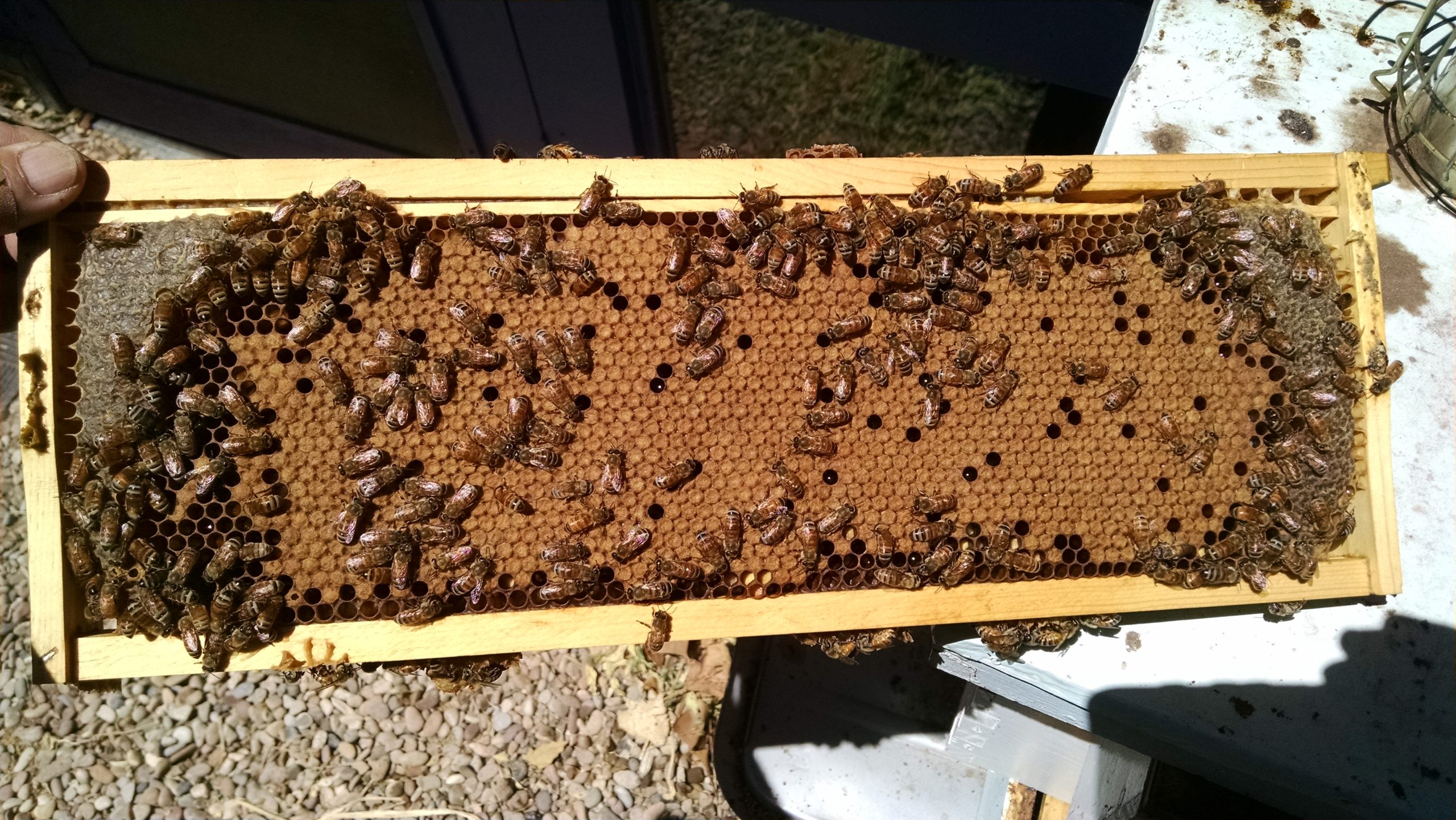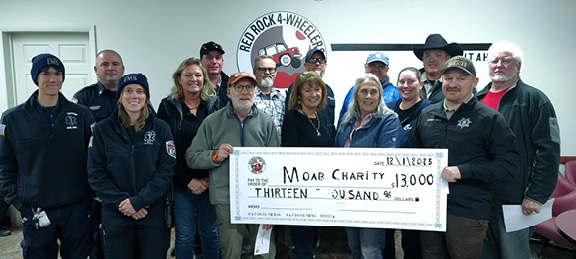Some information may be outdated.
When removing from her beehive the sticky honeycomb frame covered with bees, Antje Rath no longer bothers to wear gloves.
Although she’s been stung a few times since she took up beekeeping three years ago, she doesn’t blame the bees, of which she used to be afraid.
“If I’m in a hurry, or it’s a cloudy, windy day, it makes the bees agitated,” she said. “It takes a certain attitude (to be a beekeeper). You have to be calm; bees pick up on your energy.”
When her bees died in 2017, Grand County Bee Inspector Jerry Shue said it was due to the varroa mite, a parasite that transmits diseases to bees. Rath replaced her hive last year, and it has already produced plenty of honey for her own use and for gifts.
“It tastes so good. It’s so much better than honey from the store,” Rath said.
Another benefit of beekeeping is that her garden is more prolific, she said.
“Everything seems more alive. My oregano, thyme, are humming with bees. It’s so wonderful,” Rath said.
Easy Bee Farm owner Rhonda Gotway Clyde has also noted the connection between bees and healthy plants. She acquired two hives in 2009, more for the “intrigue” and knowing the bees would benefit her garden, she said.
“I’ve always planted tons of flowers,” she said. “I got into beekeeping for my love of plants, it was an afterthought for me.”
In the last 10 years, Gotway Clyde lost her bees on four occasions, including in 2018. She said she wondered if it could have been due to the drought. She replaced the two hives last spring. One box holds enough honey to fill a 5-gallon bucket, she said.
Beekeeping entails checking for mites, cleaning boxes, ensuring bees have plenty of space as the hive grows and providing good habitat.
“I basically keep planting; I make sure there are flowers and cover crops all year round,” Gotway Clyde said. “The plant world is where it starts if you want to be a beekeeper.”
An initial investment of approximately $300 to $400 covers basic equipment like baseboards, lids and inner covers, frames, foundation (beeswax grid inserted into the frame), a smoker, hive tools and a bee suit. Foundations need to be replaced when they become old or damaged.
You can easily spend more money than that to get started, as Bernie Radcliffe said he did when he started beekeeping about five years ago. Like a lot of local beekeepers, he became excited about beekeeping after attending a workshop taught by Shue at the Youth Garden Project.
“I’ve had some success, more failures, but I’m not giving up,” Radcliffe said. “The first year my bees survived the winter, and then the following year they died. It was strange, I opened the hive and it looked like they had frozen in time.”
When one of his three hives was destroyed by wasps last summer, he began putting out traps, which he said seems to help. He also applies black roofing paper around the bee boxes to provide extra insulation through the winter.
Planting more flowers — especially Russian sage — has also made the bees happy, he said. Though he appreciates the honey, it’s not the primary reason he keeps bees.
“It’s fascinating how they work and move around,” he said. “I like the honey I get, but I’m more interested in keeping a colony alive. It’s like a different civilization, how they’re working together.”
Radcliffe makes a point to buy local honey when he travels — he’s curious about the various flavors that honey acquires depending on the bees’ habitat — even within Moab, he said.
It’s not only flavor that’s affected by the bees’ environment. Radcliffe’s brother, a farmer in Indiana, found that his bees thrived when he planted alfalfa, but after he planted chemically-treated soybeans the bees died.
Scientists and beekeepers agree that bees’ decline is due to a combination of pests, pathogens, pesticides and poor nutrition.
Despite the challenges, Radcliffe’s advice to would-be beekeepers: “Don’t hesitate — do it!”
Although “seek advice and read books” on the topic, he added.
Shue isn’t so quick to encourage people to dive in, unless they’re fully informed and committed.
“It used to be you could put a beehive in the backyard and it would live year after year,” Shue said. “That’s not the case now. If you put a hive in your yard in the spring, by next spring there’s a 50-50 chance you will have bees one year later if you don’t treat for mites.”
Shue recommends helping an experienced beekeeper for a year and studying up on the topic. He said beekeepers everywhere are affected by the varroa mite, which originated in Indonesia. Beekeeping has become more challenging since the varroa mite arrived in the U.S. in 1987, he said. Shue also said that as beekeepers turn to pesticides to solve the mite problem, it’s contributing to the evolution of “superbug” mites that are becoming resistant to the chemicals.
Local beekeeper Rebecca Mann was more interested in learning about the species and taking on an interesting hobby than she was in the honey. She purchased a hive when she moved to Moab in 2016. She supplemented the hive after she and a friend captured a swarm of honeybees in a tree.
“I like learning about the bees and how they work, how the colony works together, how they make honey, how they make wax and build a honeycomb,” she said.
She said she typically gets 2 gallons of honey, and has made lip balm, lotion and soaps with the beeswax she gets from the hive.
One of her hives died after she didn’t treat it for mites. The other hive, which she keeps at the Moab Community Garden, is thriving, she said.
“These days there is no single thing a beekeeper can do to improve the odds of bees’ surviving, but you have to learn how to deal with the mite,” Shue advises. “If you’re going to be a beekeeper, you will need to be a mite-keeper.”
Additionally, “Plant gardens, plant flowers,” and you’ll help every species of bees and the entire ecosystem, he said.
Habitat loss and pesticides contribute to bee deaths
“It’s like a different civilization, how they’re working together.”
Appreciate the coverage? Help keep local news alive.
Chip in to support the Moab Sun News.





